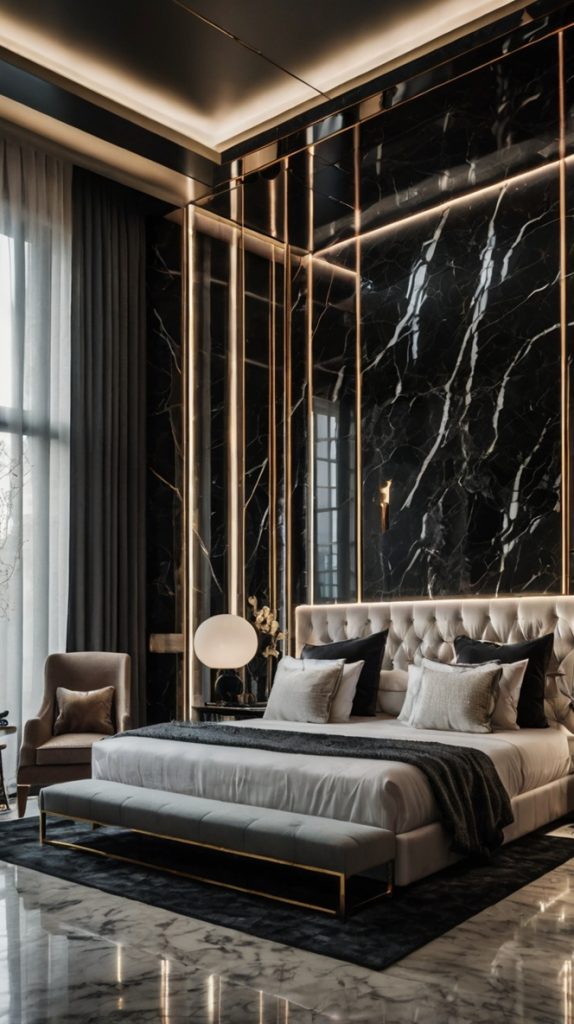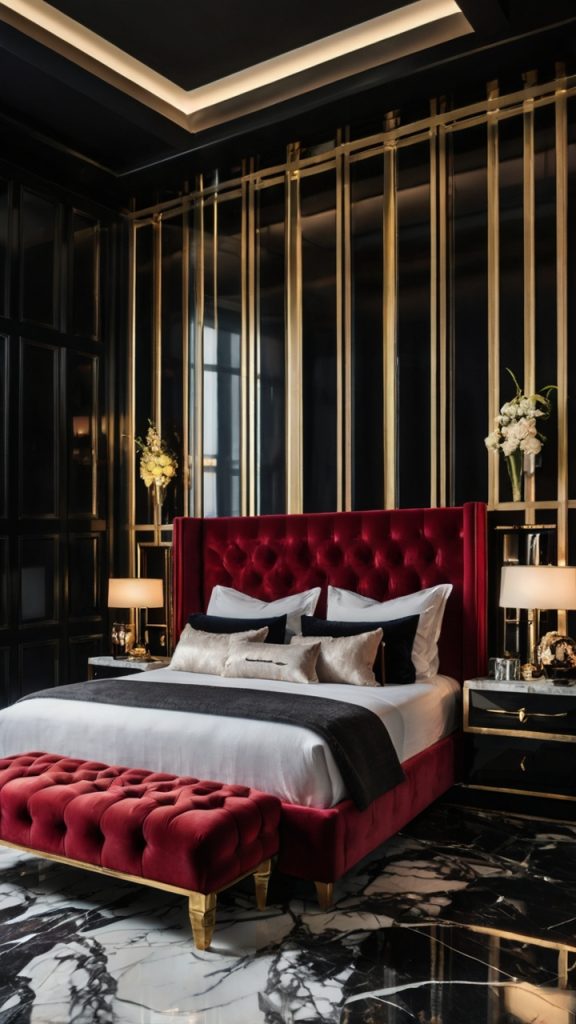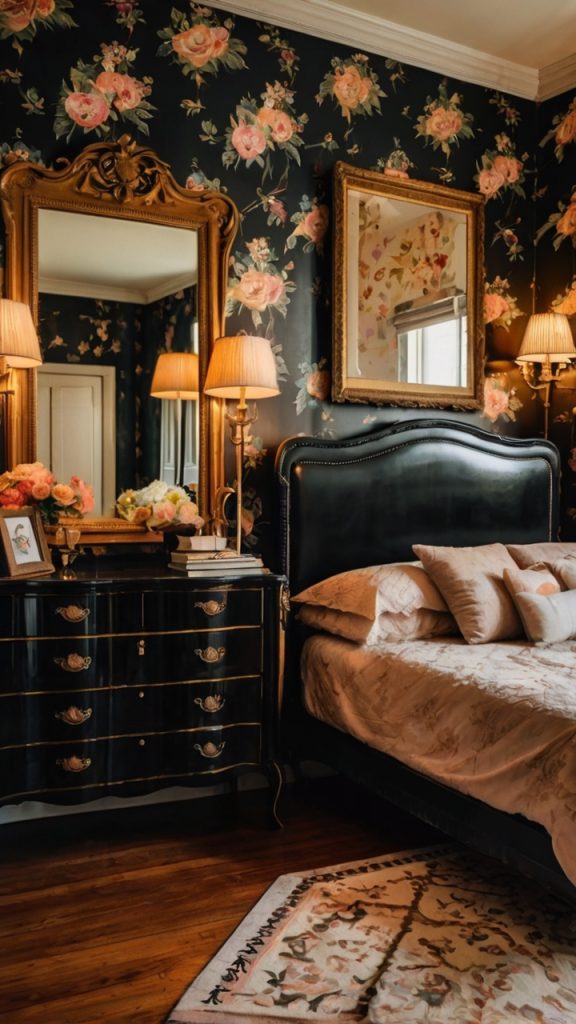15 Stylish Mid Century Modern Dining Room Ideas for Every Home
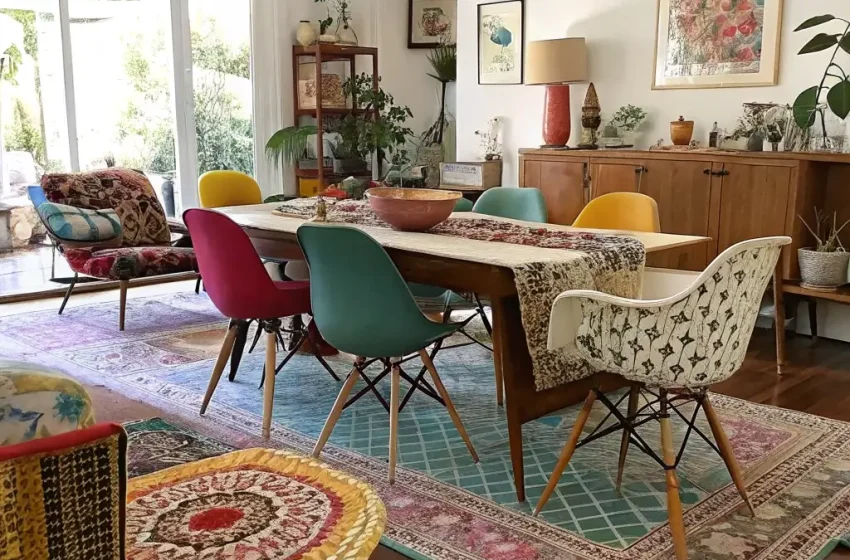
Remember that episode of Mad Men where Don Draper’s dining room looked impossibly cool? Yeah, that’s the Mid Century Modern magic we’re chasing here. You know what’s funny? My grandmother had this style nailed down in the 60s without even trying, and now we’re all scrambling to recreate it with furniture that costs more than her entire house did back then.
But here’s the thing – you don’t need a trust fund to create a stunning Mid Century Modern dining room. You just need to understand what makes this style tick and how to adapt it to your space. Whether you’re working with a cramped apartment or a sprawling suburban home, I’ve got you covered with 15 ideas that’ll transform your eating space from meh to magnificent.
Minimalist Mid-Century Modern Dining Room
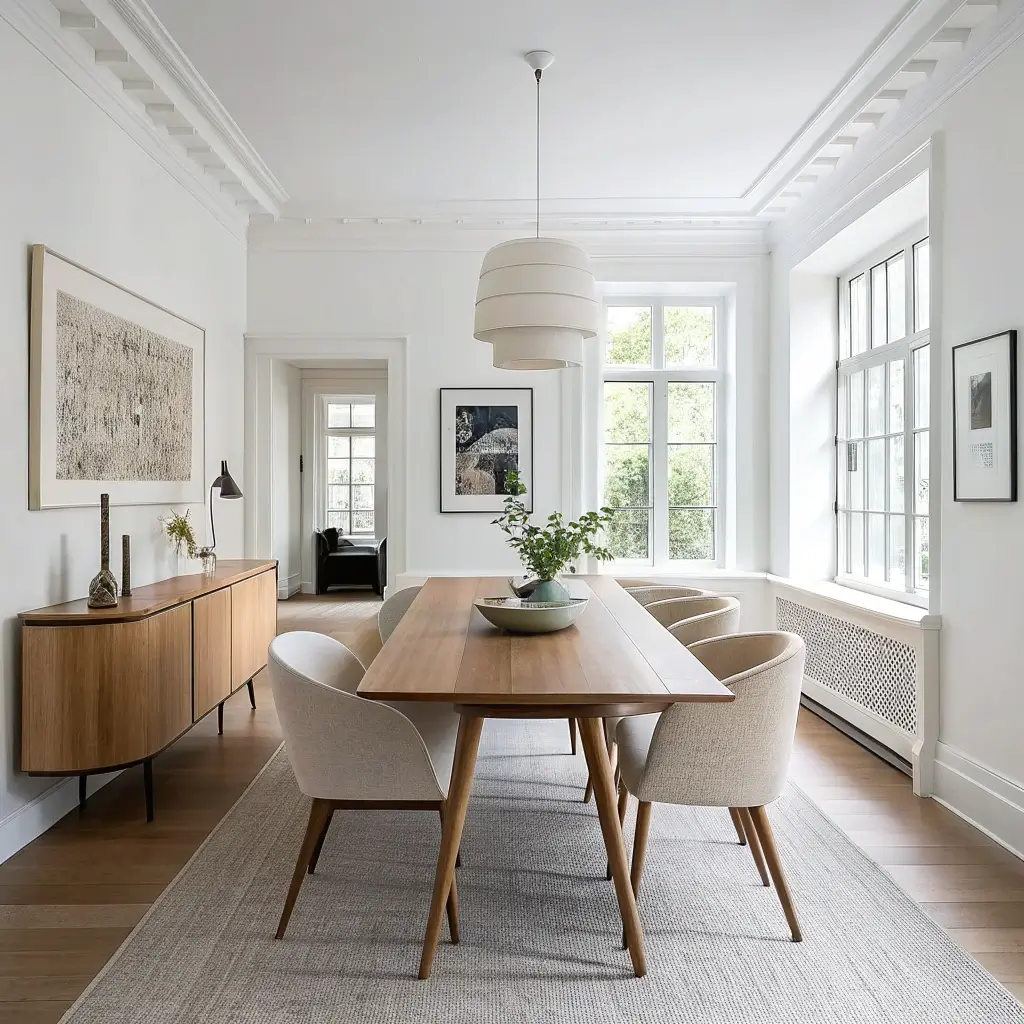
Let’s start with the backbone of MCM design – minimalism. This isn’t about having an empty room with a lonely table in the middle (though if that’s your thing, no judgment). It’s about being intentional with every single piece you choose.
I learned this the hard way when I first decorated my dining room. I thought more was better and ended up with something that looked like a furniture store exploded. The beauty of minimalist MCM design lies in its restraint. You want clean lines, uncluttered surfaces, and furniture that serves a purpose beyond just looking pretty.
Think about a simple walnut dining table with hairpin legs, paired with four chairs – not six, not eight, just what you actually need. Add one statement light fixture, maybe a George Nelson bubble lamp, and call it a day. The walls? Keep them neutral with maybe one piece of abstract art. That’s it. The space breathes, and suddenly your dinner conversations feel more important.
Key Elements for Minimalist Success:
- One focal point (usually the dining table or a statement light)
- Neutral color palette with one accent color max
- Hidden storage to maintain clean surfaces
- Quality over quantity in every furniture choice
Retro Wood & Leather Dining Setup
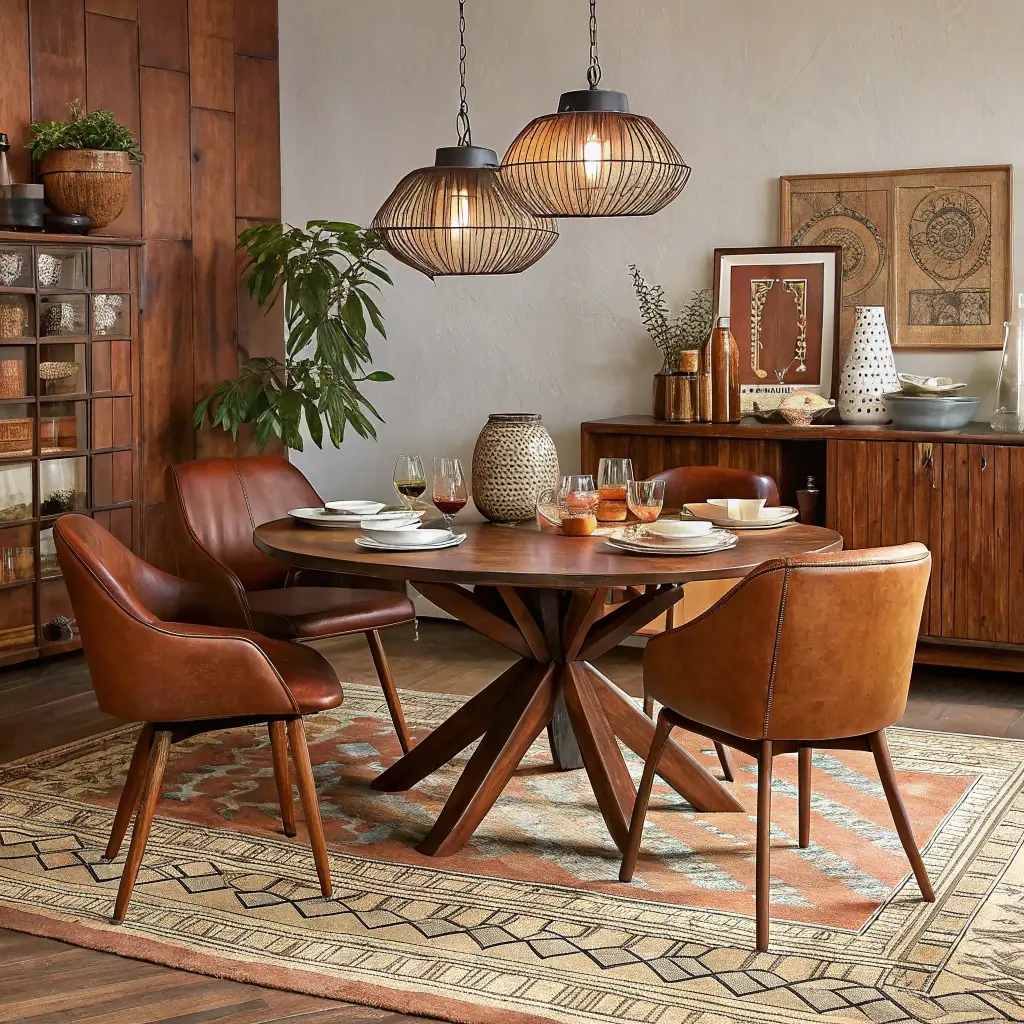
Now we’re talking! This combo screams sophistication without trying too hard. Picture this: a rich teak or walnut table surrounded by leather chairs that have developed that perfect patina over time. It’s like wearing a vintage leather jacket – instantly cool, eternally stylish.
My neighbor scored an original Broyhill Brasilia dining set at an estate sale for $400. Today? That same set sells for thousands online. But here’s a secret – you don’t need the originals. Modern reproductions capture the same vibe without the hefty price tag or the worry about ruining a piece of history with your kid’s spaghetti sauce incident.
The magic happens when you mix wood tones. Don’t be afraid to pair a darker walnut table with lighter oak chairs upholstered in cognac leather. Add a credenza in yet another wood tone. Sounds chaotic? Trust me, it works. The leather acts as a unifying element that ties everything together.
Bright and Airy Mid-Century Dining Spaces
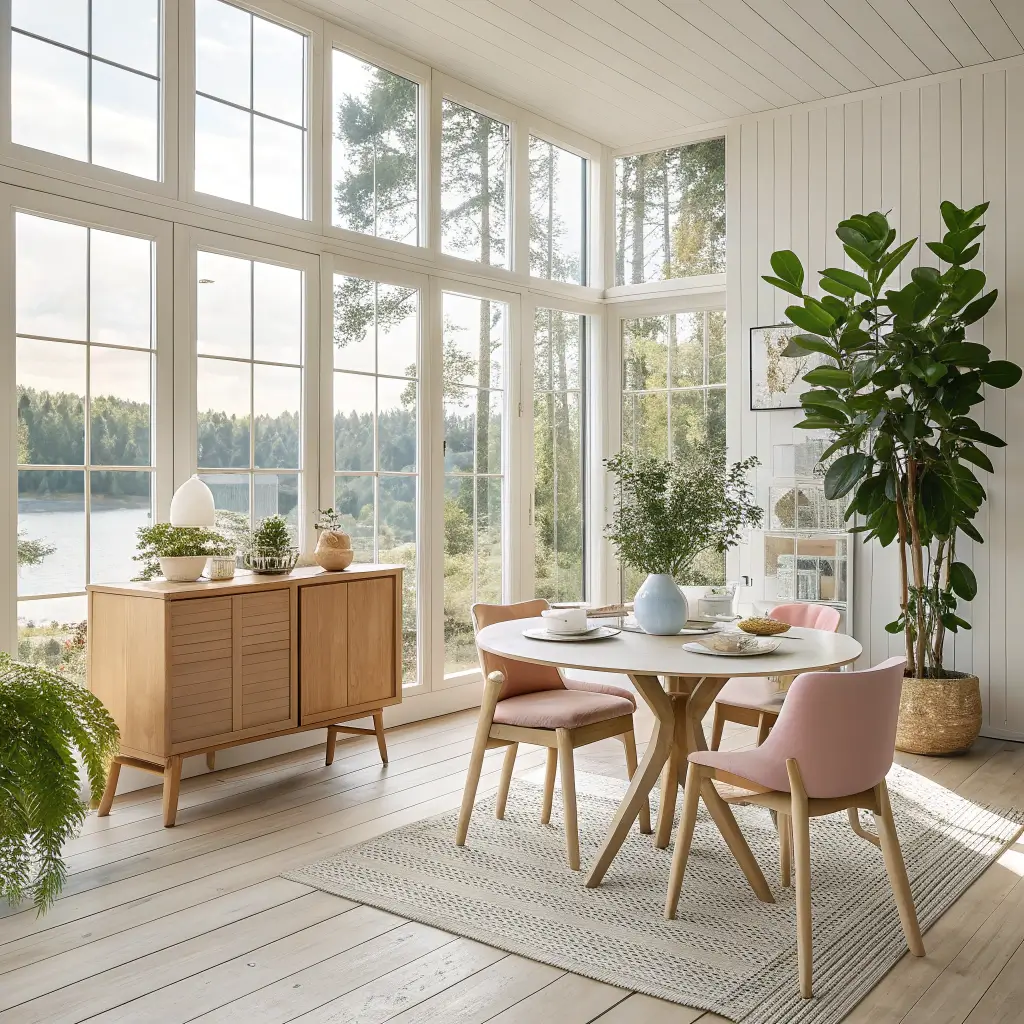
Who says MCM has to be all dark wood and moody lighting? Some of the best Mid Century Modern dining rooms I’ve seen feel like you’re eating in a cloud – in the best way possible.
Start with white or light gray walls. Choose furniture with slender profiles that won’t visually weigh down the space. Glass-topped tables with wooden bases work brilliantly here. They maintain that MCM aesthetic while keeping things visually light.
Natural light becomes your best friend in these spaces. If you’ve got windows, flaunt them. Skip the heavy drapes and opt for simple roller shades or even leave them bare if privacy isn’t an issue. I once helped a friend transform her dark dining room just by removing the dusty velvet curtains her mother-in-law insisted on. The difference? Night and day, literally.
Brightening Tricks That Actually Work:
- White or light wood dining tables
- Mirrors strategically placed to bounce light
- Light-colored rugs to ground the space without darkening it
- Metallic accents in brass or chrome for extra sparkle
Compact Mid-Century Modern Dining for Small Homes
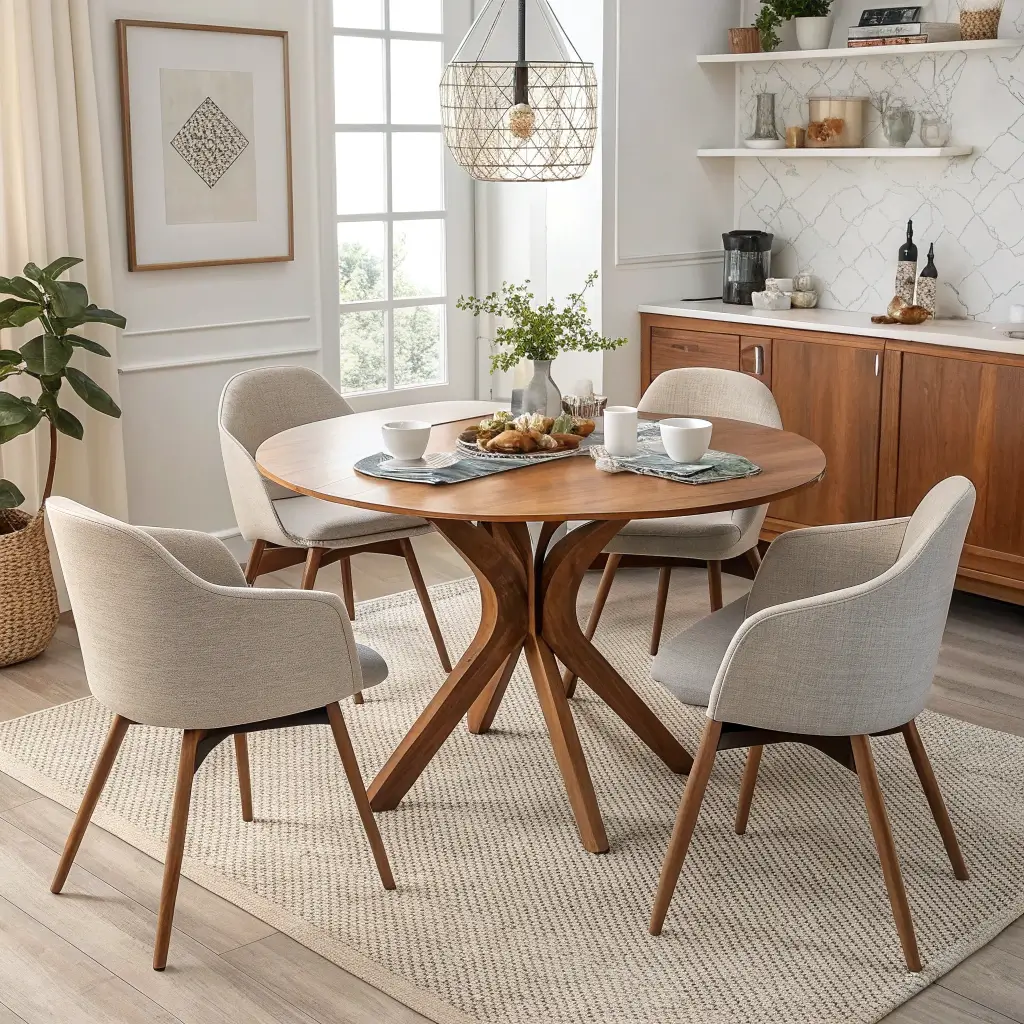
Living in 500 square feet? Been there, done that, got the cramped t-shirt. But small spaces and MCM design are actually best friends – this style was literally created for post-war homes that weren’t exactly mansions.
The trick lies in choosing multi-functional pieces. Get yourself an expandable dining table – the kind that goes from seating four to eight when your in-laws suddenly announce they’re coming for dinner. Round tables work magic in tight spaces because nobody’s catching their hip on a corner (speaking from painful experience here).
Wall-mounted shelving instead of a buffet saves floor space while still giving you somewhere to display your vintage barware collection. And please, for the love of all that is holy, choose chairs you can stack or tuck completely under the table. Your shins will thank you during those midnight water runs.
Elegant Walnut Dining Table Inspiration
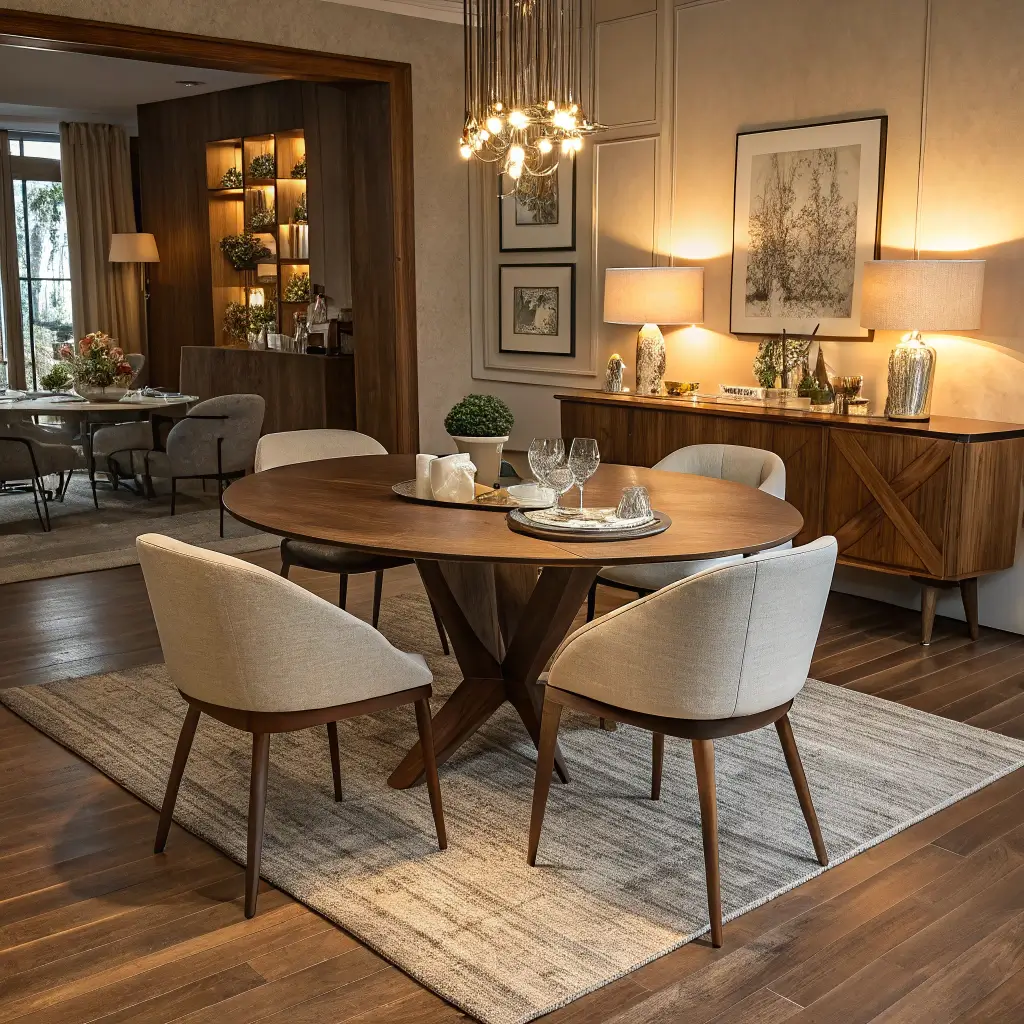
Walnut is the undisputed king of Mid Century Modern wood choices. There’s something about its rich, chocolate tones and distinctive grain pattern that just hits different. It’s warm without being overpowering, sophisticated without being stuffy.
I’ve been obsessed with walnut dining tables ever since I saw an original George Nakashima piece at a museum. Sure, that particular table costs more than most cars, but the inspiration it provides? Priceless. Look for tables with live edges if you want something truly special, or stick with clean, geometric shapes for a more traditional MCM vibe.
The beauty of walnut lies in its versatility. Pair it with white tulip chairs for a contrast that pops, or go full warmth with orange or mustard upholstery. Just remember – walnut is a statement in itself, so let it be the star of the show.
Mid-Century Modern Dining with Bold Accents
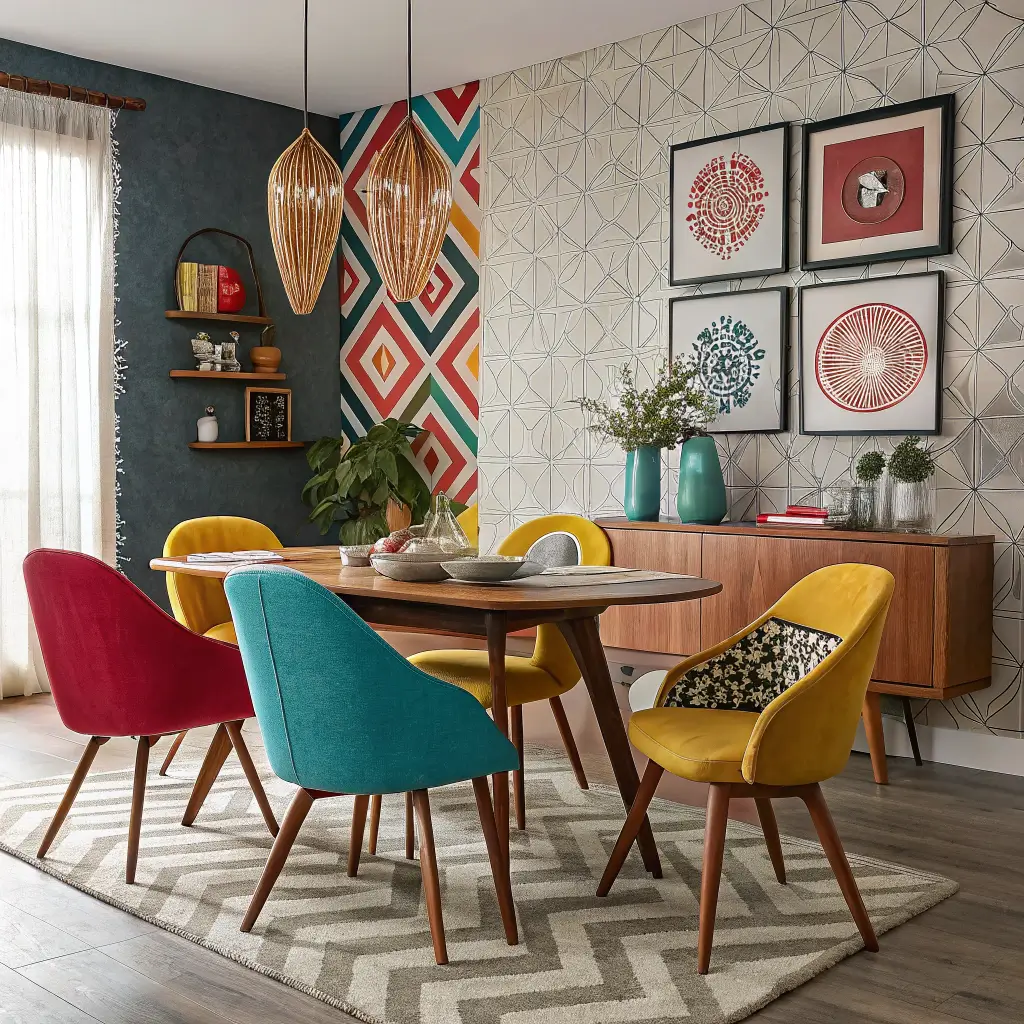
Sometimes you need to shake things up, right? While MCM design often gets stereotyped as subdued, the original movement was actually pretty bold. Think about those orange and turquoise color combos that defined the era.
Start with a neutral base – maybe a simple wood table and basic chairs. Then go wild with your accents. A bright orange rug under the table? Yes, please. Turquoise cushions on the chairs? Why not. A massive abstract painting in jewel tones dominating one wall? Now you’re talking.
The key to pulling off bold accents without looking like a circus exploded is the 60-30-10 rule. Use your neutral base for 60% of the room, your secondary color for 30%, and that bold accent for just 10%. It keeps things interesting without overwhelming your retinas.
Bold Accent Ideas That Won’t Break the Bank:
- Colorful chair cushions (easily changeable when you get bored)
- A statement chandelier in an unexpected color
- Bold artwork or wall decals
- Bright colored glassware displayed on open shelving
Read More: 15 Elegant Green Dining Room Ideas and Luxe Makeover Tricks
Scandinavian Meets Mid-Century Dining Room
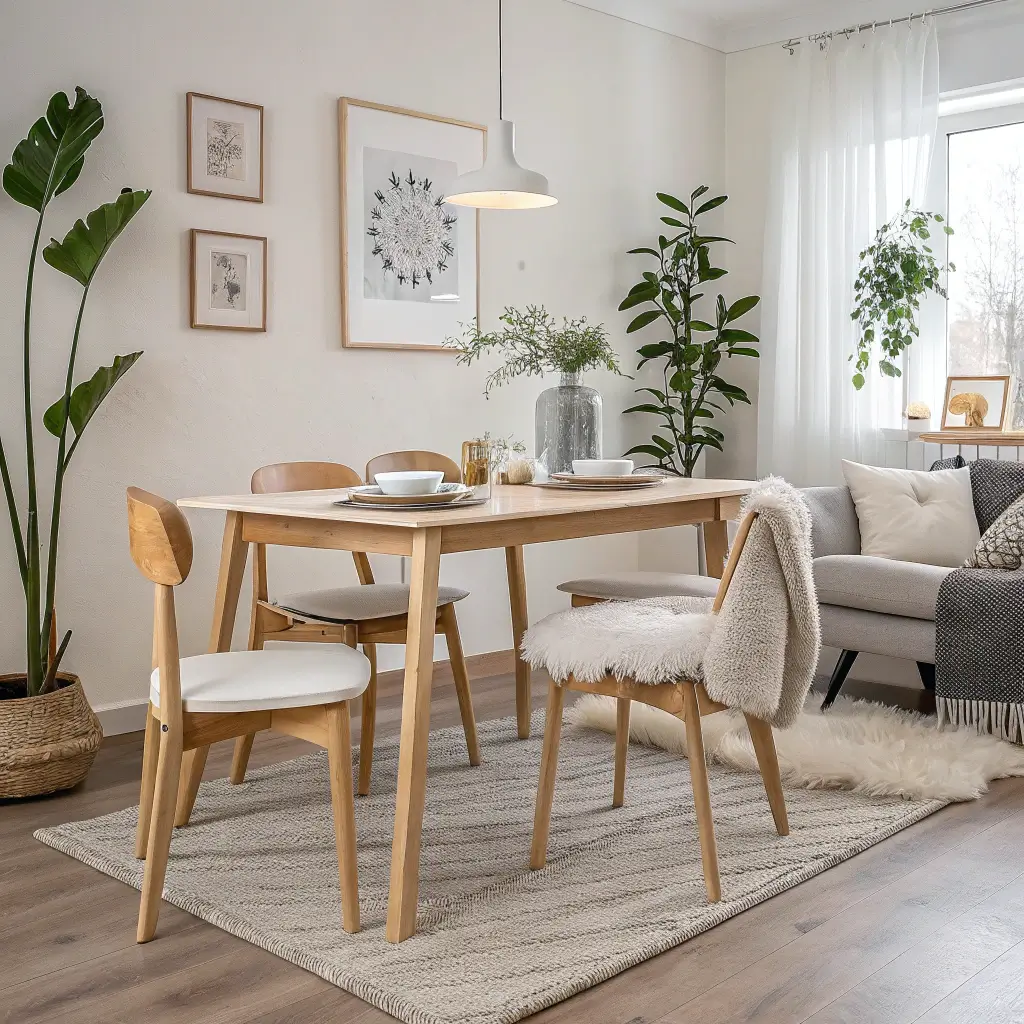
This mashup is basically design perfection IMO. You get the warmth of MCM with the zen-like simplicity of Scandinavian design. It’s like peanut butter meeting jelly – individually great, together unstoppable.
Focus on light woods like ash or birch instead of the darker tones typically associated with MCM. Keep the color palette super neutral – whites, grays, and natural wood tones. But here’s where it gets interesting: add texture through materials rather than colors.
Sheepskin throws over dining chairs, a chunky knit runner on the table, maybe a jute rug underneath – these elements add visual interest without disrupting the calm vibe. I tried this approach in my sister’s dining room, and now she hosts every family dinner because everyone loves the space so much. Mission accomplished? 🙂
Vintage Lighting Ideas for Dining Spaces
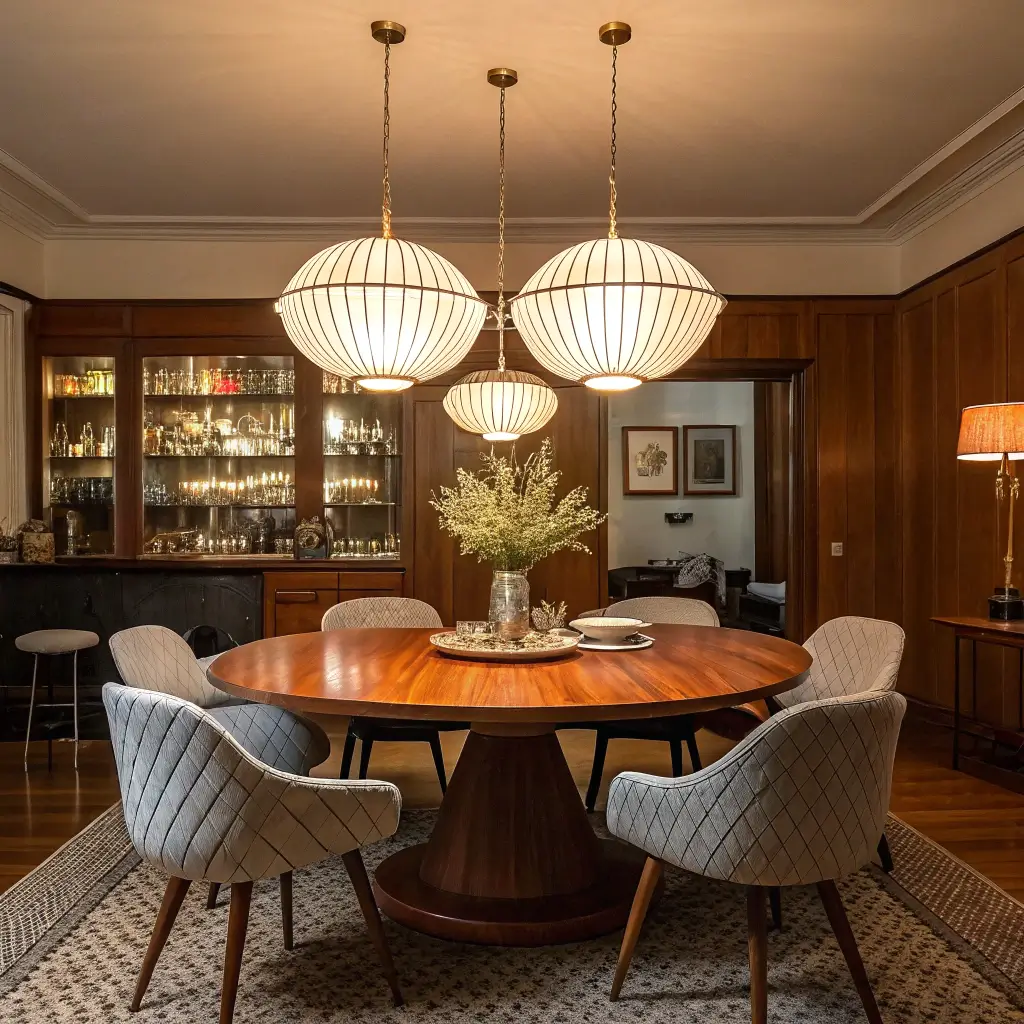
Lighting can make or break your MCM dining room – seriously, it’s that important. The right fixture doesn’t just illuminate; it becomes sculptural art that happens to be functional.
Sputnik chandeliers remain the gold standard for a reason. They’re dramatic without being heavy, modern without being cold. But if everyone and their mother has a Sputnik (guilty as charged), consider alternatives like a Nelson bubble lamp or a cascading pendant light with multiple glass globes.
Here’s a pro tip: layer your lighting. Don’t rely solely on that showstopping chandelier. Add a floor lamp in the corner with a tripod base, maybe some wall sconces if you’re feeling fancy. The ability to adjust lighting levels transforms your dining room from homework central to romantic dinner spot in seconds.
Neutral Palette Mid-Century Dining Designs
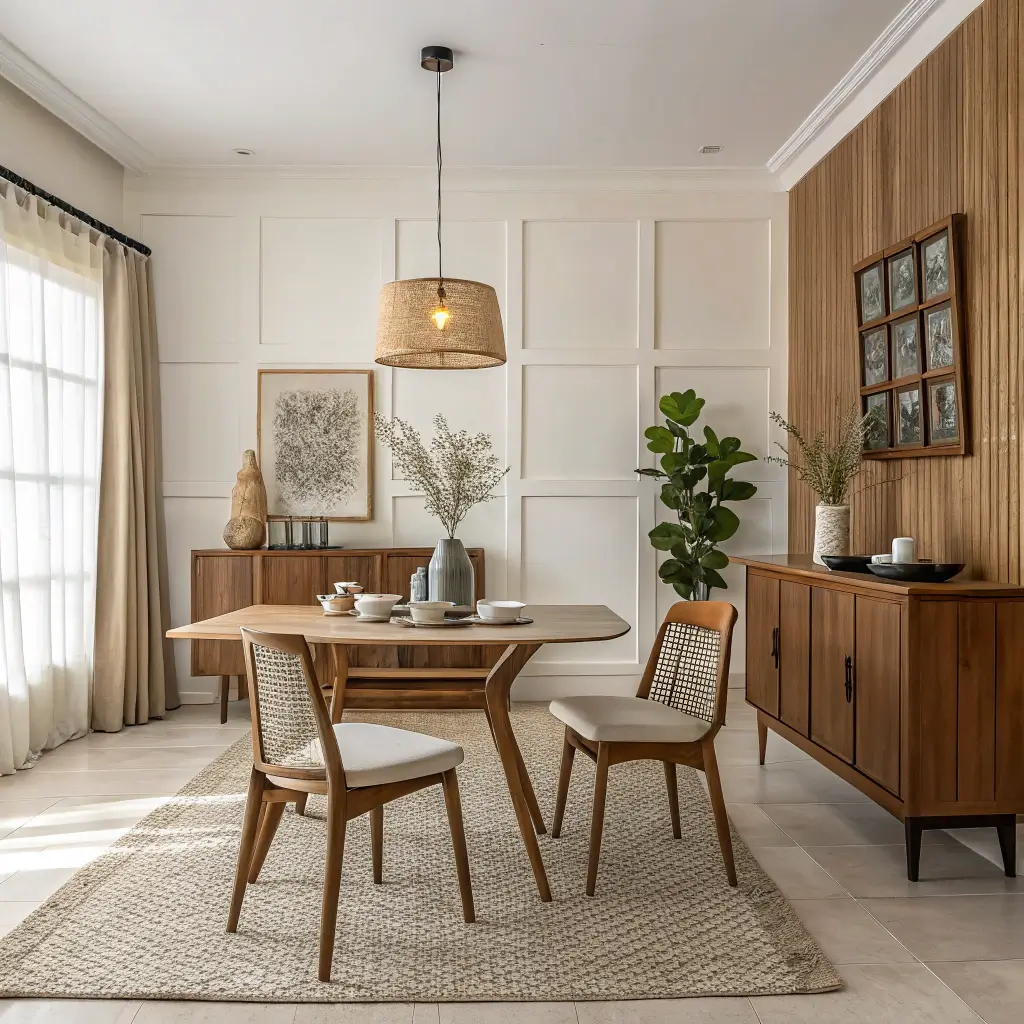
Neutrals get a bad rap for being boring, but done right, they’re anything but. A neutral MCM dining room lets the furniture shapes and textures do the talking instead of relying on color for impact.
Start with varying shades of the same color family. Layer warm grays with cooler ones, mix cream with beige and tan. The subtle variations create depth without chaos. Your eye moves around the room naturally, taking in each carefully chosen piece.
Materials become crucial here. Mix smooth leather with nubby linen, polished wood with rough ceramics. I once saw a dining room with all-beige everything, but the interplay of textures made it one of the most interesting spaces I’d ever been in. Who knew beige could be so exciting?
Making Neutrals Pop:
- Mix warm and cool undertones intentionally
- Incorporate metallic accents for subtle shine
- Use plants as your only color source
- Play with pattern through subtle geometric prints
Read More: 10 Luxurious Formal Dining Room Ideas for Timeless Style
Eclectic Mid-Century Modern Dining Mix
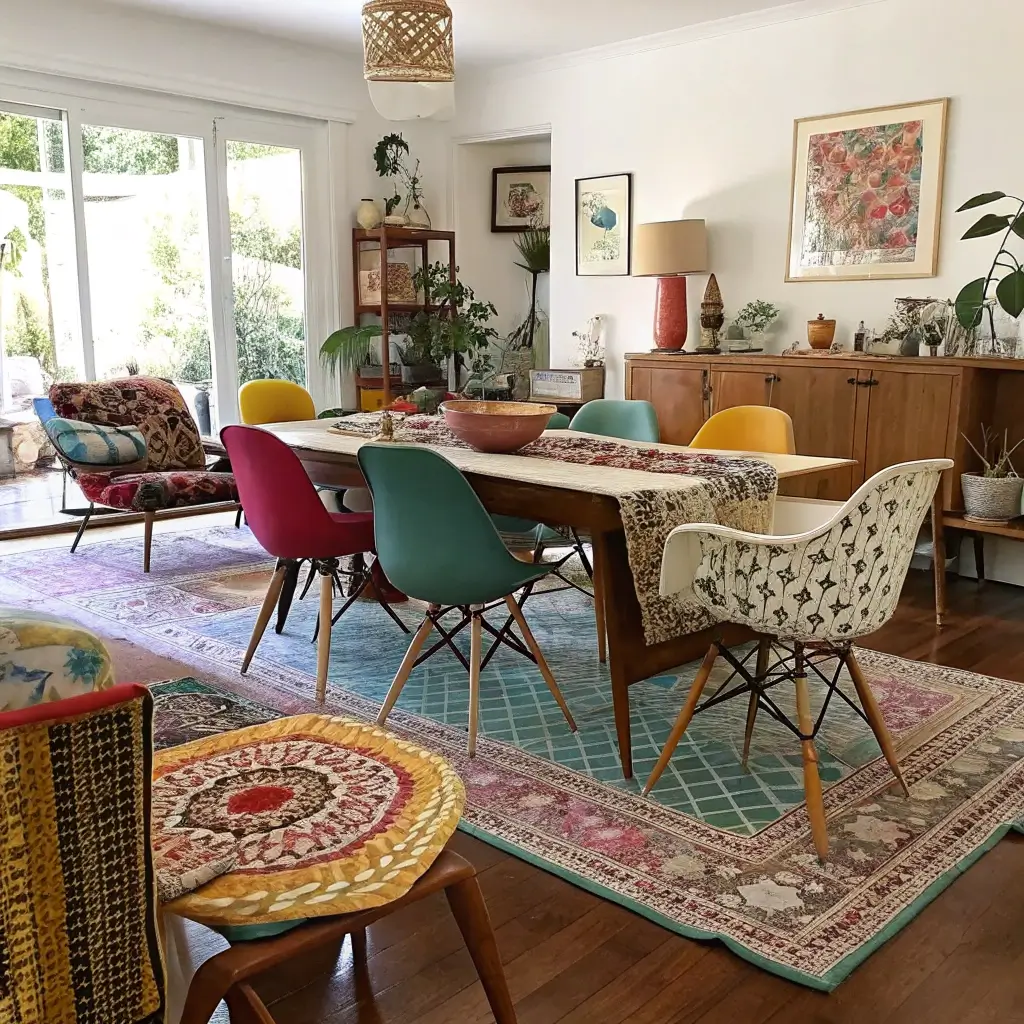
Rules? Where we’re going, we don’t need rules. Eclectic MCM takes the best elements of the style and mixes them with whatever else makes your heart sing. Victorian mirror with your Danish Modern table? Sure. Moroccan rug under your Eames chairs? Absolutely.
The trick to eclectic without chaotic lies in finding a common thread. Maybe everything shares a similar wood tone, or perhaps you stick to a consistent color palette across different style periods. In my dining room, I’ve got a 1960s table, 1980s postmodern chairs, and a contemporary light fixture. What ties them together? They all feature black metal elements.
Don’t be afraid to mix high and low either. That expensive vintage sideboard looks even better next to DIY art you made last weekend. It shows confidence in your choices and creates a space that’s uniquely yours.
Mid-Century Modern Dining with Statement Chairs
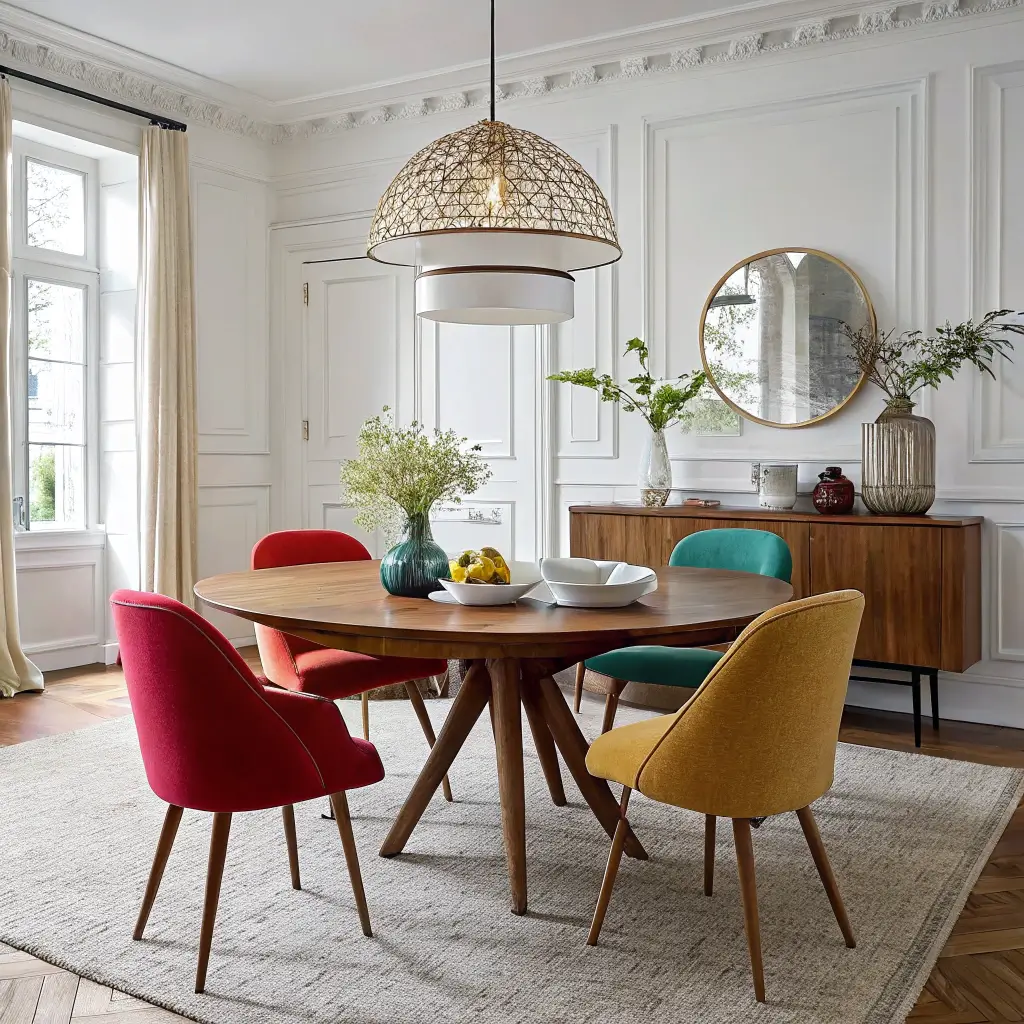
Forget the table – sometimes the chairs deserve top billing. MCM produced some of the most iconic chair designs in history, and using them in your dining room instantly elevates the entire space.
Mix and match different styles around your table. Maybe two Eames molded plastic chairs at the heads, with wishbone chairs along the sides. Or go bold with all different chairs united by a common color. I’ve seen this done brilliantly with various wood chairs all painted the same shade of navy.
Original designer chairs cost a fortune, but quality reproductions offer the same visual impact. FYI, nobody at your dinner party will check the manufacturer’s stamp under the seat. They’ll be too busy admiring how good everything looks together.
Cozy Mid-Century Modern Dining Corners
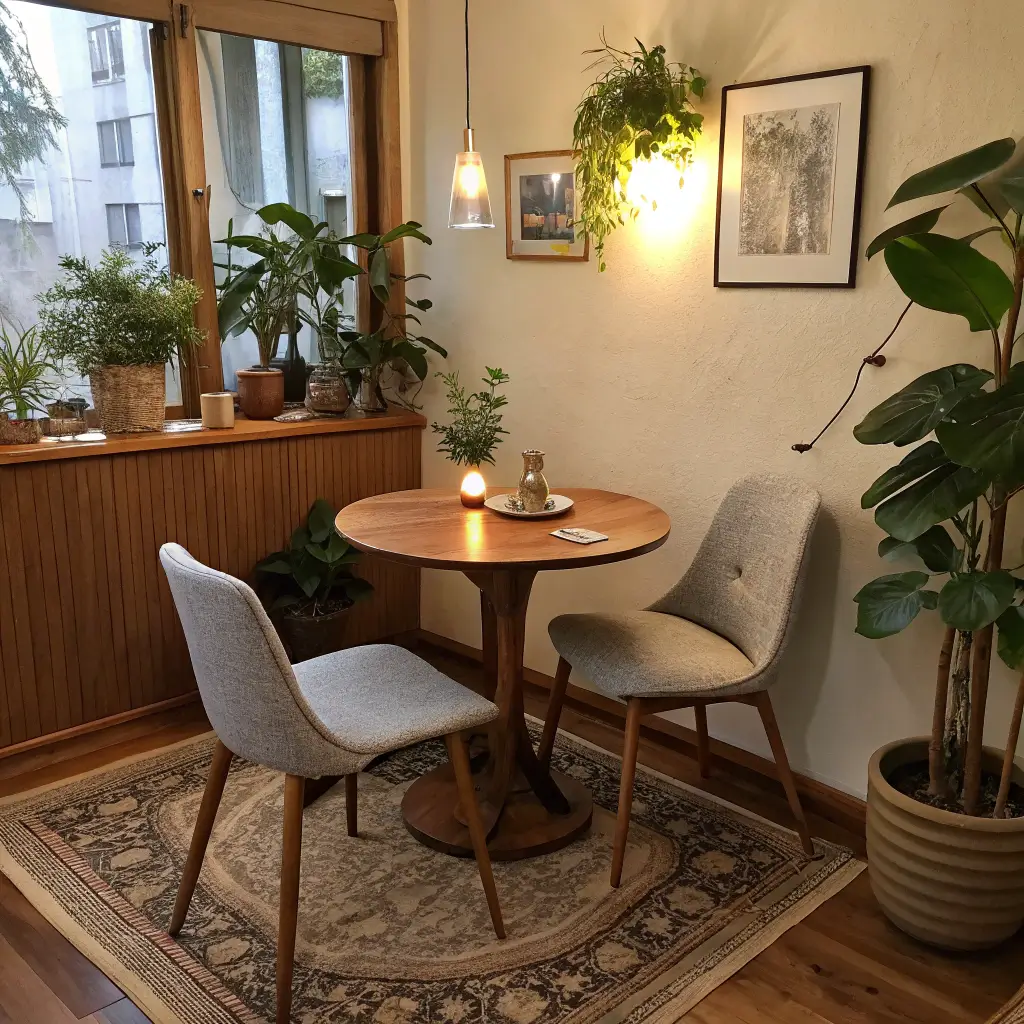
Not everyone has a dedicated dining room, and that’s totally fine. Some of the most charming dining spaces I’ve seen were carved out of living rooms or tucked into kitchen corners.
Create definition with a rug that sits entirely under your dining set. This visually separates the dining area from the rest of the room. Add a pendant light centered over the table – even in a corner, this creates a focal point that says “this is where we eat.”
Built-in banquette seating along walls maximizes space while adding that classic MCM built-in look. Add some colorful cushions and a small round table, and suddenly that awkward corner becomes the best seat in the house.
Making Corner Dining Work:
- Use round tables to improve flow in tight spaces
- Install floating shelves above for display and storage
- Choose chairs that can serve double duty elsewhere when needed
- Add a mirror to make the corner feel larger
Read More: 15 Creative Japandi Dining Room Ideas for Small Spaces
Open-Concept Mid-Century Dining Layouts
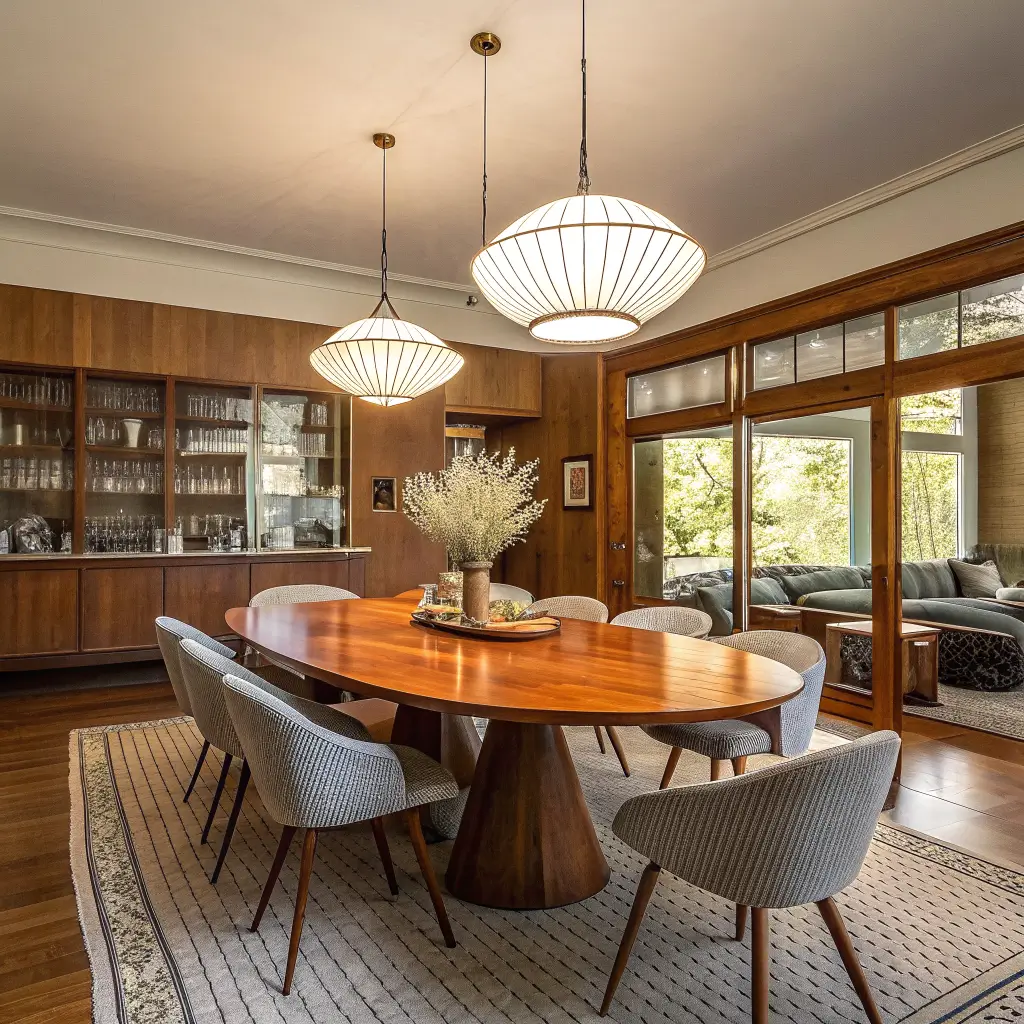
Open floor plans and MCM design go together like Don Draper and questionable life choices. The style’s emphasis on flow and connection between spaces makes it perfect for modern open-concept living.
Your dining area needs to converse with the kitchen and living room without screaming for attention. Choose a dining set that echoes materials or colors from adjacent spaces. If your living room has a walnut media console, a walnut dining table creates visual continuity.
Define the dining zone without walls using lighting and rugs. A large pendant or chandelier centered over the table immediately identifies this as the dining area. Just make sure the scale is right – too small and it looks lost, too large and it overwhelms.
DIY Mid-Century Modern Dining Room Decor
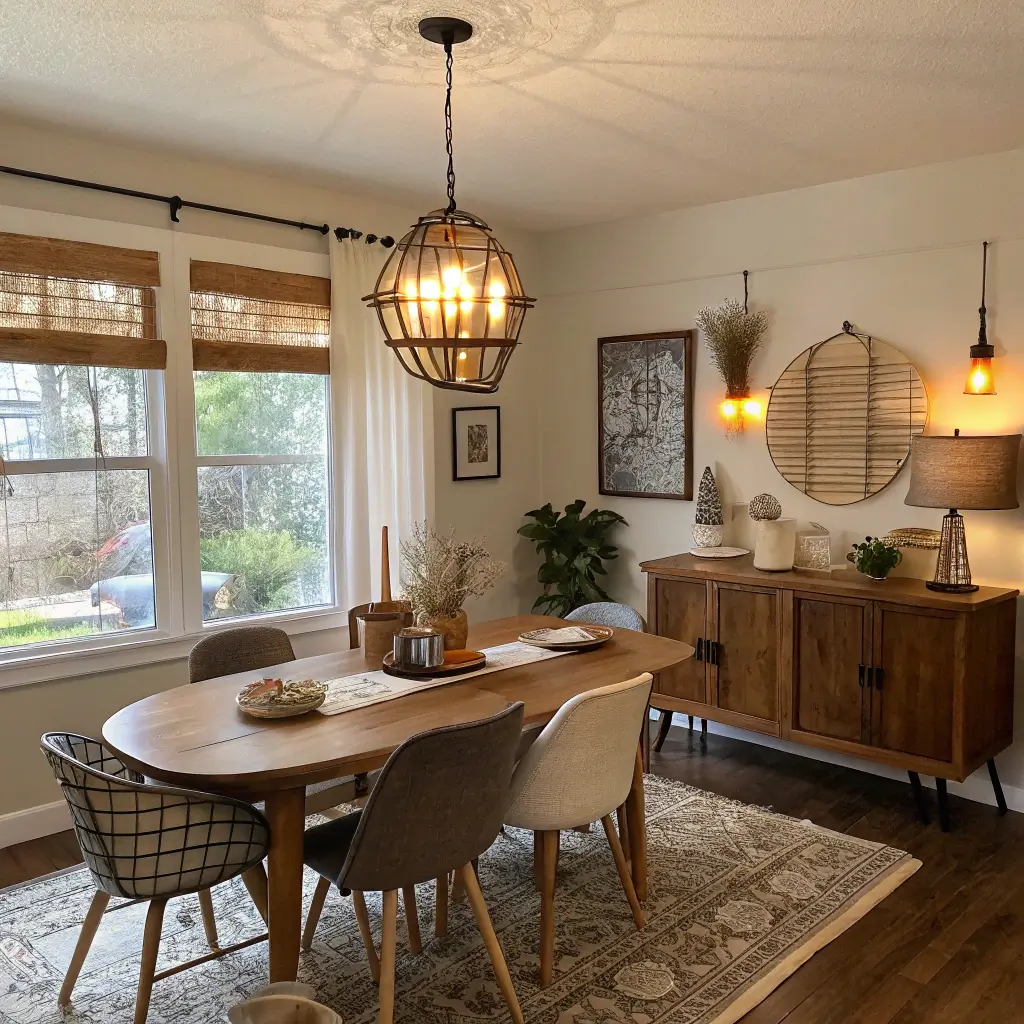
Want that MCM look without selling a kidney? Roll up your sleeves, friend. Some of the best MCM-inspired pieces I own came from thrift stores and a can of spray paint.
Hairpin legs transform literally anything into MCM gold. Attach them to a reclaimed wood slab for an instant dining table. Found some beat-up wooden chairs at a yard sale? Sand them down, stain them walnut, and reupholster the seats in burnt orange fabric. Boom – you’ve got yourself some serious style for under $50.
Create your own art by framing vintage fabric or wallpaper samples in simple black frames. Arrange them in a grid pattern for maximum impact. Nobody needs to know you spent $20 at the flea market instead of $200 at the design store.
DIY Projects That Actually Look Professional:
- Macrame plant hangers for that 70s MCM vibe
- Geometric wood wall art using different stain colors
- Reupholstered thrift store chairs in period-appropriate fabrics
- Painted accent walls in bold MCM colors
Mid-Century Modern Dining with Natural Textures
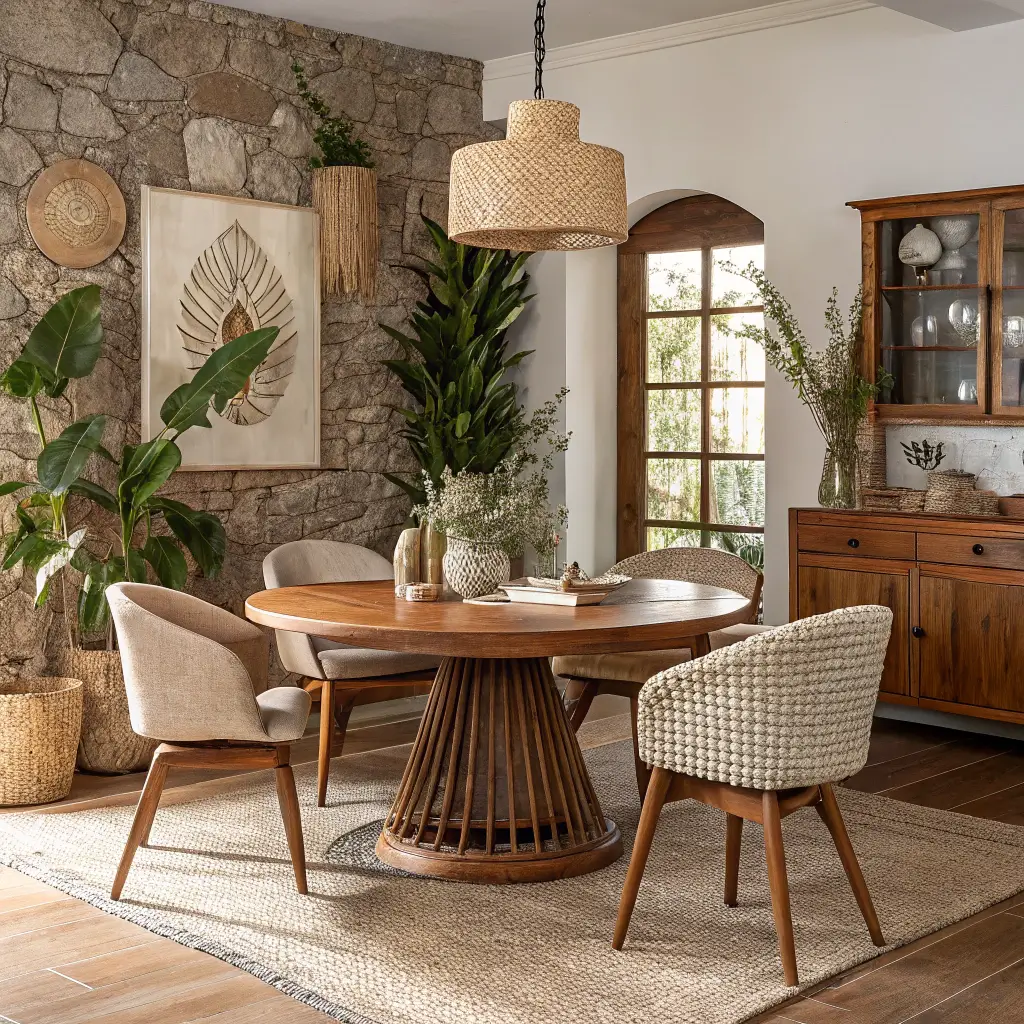
The final frontier in MCM dining design brings the outside in through natural materials and textures. This isn’t about going full jungle (though plants are definitely invited to the party). It’s about incorporating organic elements that soften the sometimes stark lines of MCM furniture.
Rattan and cane details on chairs add warmth without sacrificing the clean aesthetic. A live-edge wood table brings nature’s randomness into the geometric world of MCM. Even something as simple as linen napkins and a wooden bowl filled with lemons adds that natural touch.
Stone elements work beautifully too. A marble lazy Susan on your wooden table, or terrazzo coasters scattered about – these details ground the space and add sophisticated texture. My favorite addition to any MCM dining room? A huge fiddle leaf fig in the corner. It’s basically the perfect MCM plant with those large, geometric leaves.
Wrapping Up Your MCM Dining Journey
Creating the perfect Mid Century Modern dining room isn’t about following a rigid formula or dropping serious cash on authentic vintage pieces. It’s about understanding the principles – clean lines, functional beauty, quality materials – and adapting them to your life, your space, and yes, your budget.
Whether you go full minimalist or embrace eclectic chaos, whether you DIY everything or invest in that one perfect piece, the goal remains the same. You want a dining space that makes every meal feel special, every gathering memorable. A space that looks like it belongs in a magazine but actually gets used for Tuesday night takeout.
The beauty of MCM design lies in its flexibility. These ideas aren’t rules carved in stone; they’re starting points for your own creative journey. Mix them, match them, completely ignore some if they don’t speak to you. The best dining room is one that makes you happy every time you walk in.
So grab that measuring tape, start that Pinterest board, and get ready to transform your dining space. Trust me, your dinner guests will thank you. And who knows? Maybe your dining room will be the one inspiring someone else’s design journey. Now wouldn’t that be something? :/
